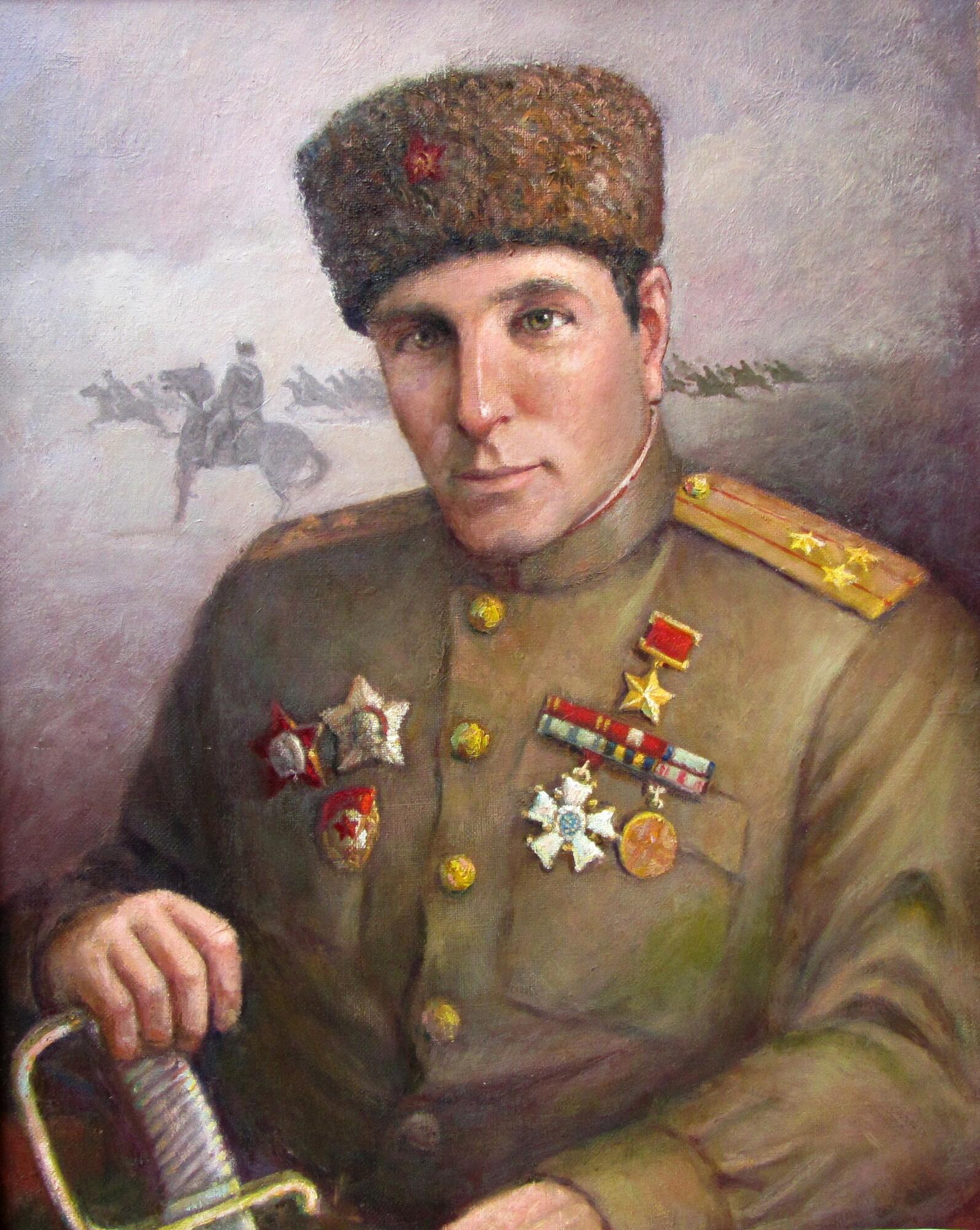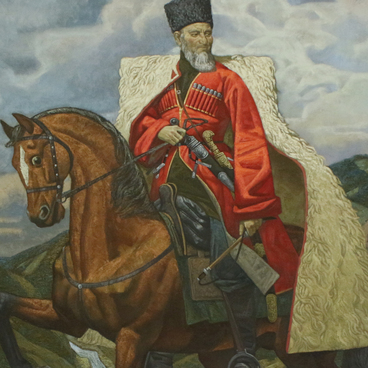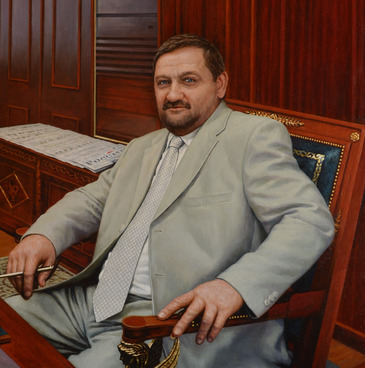The collection of the Akhmad Kadyrov Memorial Complex of Glory features a portrait of Movlid Visaitov, a participant in the Great Patriotic War, Hero of the Soviet Union. He is depicted on a white background, light gray silhouettes of riders are visible behind his back. Visaitov’s right hand rests on the hilt of his saber. He is dressed in a military uniform and a kubanka — a low hat and a uniform headdress of Soviet cavalrymen. Visaitov has several orders and medals on his chest, including the star of the Hero of the Soviet Union.
Movlid Visaitov was born in 1913 in the Chechen village of Lakha Nevre, now it is the village of Nadterechnoye in the district of the same name in the Chechen Republic. Visaitov served in the Red Army since 1935, graduated from infantry school and cavalry advanced training courses for command personnel. By the beginning of the war, he had the rank of captain and served in a cavalry regiment.
From the very first days of the Great Patriotic War, Movlid Visaitov distinguished himself in battles. In the battle near the Ukrainian village of Kirdany, he personally led a cavalry squadron into the attack, which broke through the enemy’s defenses and repelled the attack of German troops three times in a few days. For these battles, Visaitov was one of the first Soviet officers to receive the Order of the Red Banner.
On May 13, 1942, Movlid Visaitov was appointed commander of the 255th separate Chechen-Ingush Cavalry Regiment. The unit participated in the Battle of Stalingrad, lost a lot of fighters, so the remaining ones were combined into two cavalry reconnaissance divisions and attached to the 4th Cavalry Corps.
In April 1945, Movlid Visaitov commanded the 28th Guards Cavalry Regiment. The fighters under his leadership took the German cities of Schwedt and Rheinsberg, completely defeated two enemy regiments and freed more than 3,000 prisoners from concentration camps, and on May 2 they reached the Elbe River. Visaitov was one of the first Soviet commanders to meet there with allied Anglo-American troops. US President Harry Truman presented Movlid Visaitov with the Legion of Merit. The Soviet authorities awarded him the Order of Lenin in May 1945. Visaitov was presented to the title of Hero of the Soviet Union several times, but he was awarded it only in 1990, already posthumously.
Movlid Visaitov was born in 1913 in the Chechen village of Lakha Nevre, now it is the village of Nadterechnoye in the district of the same name in the Chechen Republic. Visaitov served in the Red Army since 1935, graduated from infantry school and cavalry advanced training courses for command personnel. By the beginning of the war, he had the rank of captain and served in a cavalry regiment.
From the very first days of the Great Patriotic War, Movlid Visaitov distinguished himself in battles. In the battle near the Ukrainian village of Kirdany, he personally led a cavalry squadron into the attack, which broke through the enemy’s defenses and repelled the attack of German troops three times in a few days. For these battles, Visaitov was one of the first Soviet officers to receive the Order of the Red Banner.
On May 13, 1942, Movlid Visaitov was appointed commander of the 255th separate Chechen-Ingush Cavalry Regiment. The unit participated in the Battle of Stalingrad, lost a lot of fighters, so the remaining ones were combined into two cavalry reconnaissance divisions and attached to the 4th Cavalry Corps.
In April 1945, Movlid Visaitov commanded the 28th Guards Cavalry Regiment. The fighters under his leadership took the German cities of Schwedt and Rheinsberg, completely defeated two enemy regiments and freed more than 3,000 prisoners from concentration camps, and on May 2 they reached the Elbe River. Visaitov was one of the first Soviet commanders to meet there with allied Anglo-American troops. US President Harry Truman presented Movlid Visaitov with the Legion of Merit. The Soviet authorities awarded him the Order of Lenin in May 1945. Visaitov was presented to the title of Hero of the Soviet Union several times, but he was awarded it only in 1990, already posthumously.



